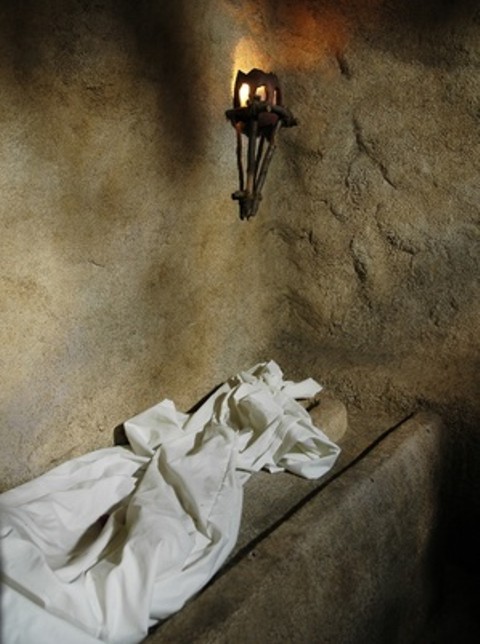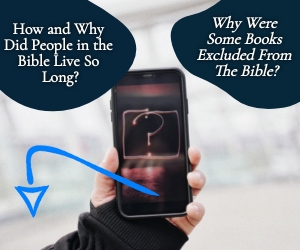The resurrection of Christ is a paramount doctrine in Christianity. It is the event that proves to us that Jesus was who He claimed to be—the Son of God. Let’s look at a few facts concerning the resurrection and why they are important.
A Historical Fact
The life of Christ is a fact of history. His resurrection is as widely reported as His actual existence. There were many eyewitness accounts of Christ being alive after his burial. Mary saw Jesus at the tomb. A few disciples saw Him before the whole group did (Acts 1:3-9). A couple of men on their way to Emmaus carried on an extended conversation with the risen Lord (Luke 24:13-35). Even large groups of hundreds saw Christ after his resurrection (1 Corinthians 15:4-8).
Believing in the historical account of the resurrection is important for someone to understand the full significance of what Christ’s resurrection means for the believer.
The Resurrection Was Prophesied
According to that great resurrection passage, 1 Corinthians 15, Jesus rose from the dead as the Scriptures had previously prophesied. Isaiah said that Christ would be cut off from the living and then be brought back to prolonged life (Isaiah 53:8-10). Psalm 22 talks extensively of Christ’s death, but also about His eternal life. Many Old Testament prophecies about the resurrection can only be understood because of what we know today looking back historically. Therefore, when Christ began to speak of His death, those around Him were caught off guard as they were expecting a Messiah who would immediately take over the leadership of their nation.
The Tomb Was Protected
The tomb of Jesus Christ was protected in 3 documented ways which helped ensure that the disciples of Christ would not steal His body. Care was given to this so that it could not be claimed that the resurrection was an elaborate hoax. It seems the Bible goes into great detail helping us know the facts surrounding the resurrection of our Lord.
First there was a large stone set in front of the tomb to guard the body (Matthew 27:66). This was customary and not unusual. A stone used for this purpose would have weighed between 1 and 2 tons—or about the weight of a car. A small number of men could have put it in place because typically the place in front of the tomb was sloped. But removing it was not easy for a few men because the stone would have to roll uphill. It was impossible for a few men to secretly roll the stone away without alerting the Roman guard.
Second, a Roman guard was sent to protect the tomb (Matthew 27:64-66). The punishment for falling asleep on duty or walking away from their post was the death penalty. With such a steep price to pay, it does not make sense that they would have simply fallen asleep without divine intervention.
The third thing that was done to protect the tomb was a Roman seal was placed upon it (Matthew 27:66). Death by crucifixion was the punishment for breaking the seal. No one would want to be found guilty of that. Though the disciples became bold men in Acts, they were not so bold in the Gospels to risk their own lives pulling off a prank with such severe consequences.
Not an Empty Tomb
The tomb was not completely empty. John was careful to explain to us in his Gospel (which was written many years after the fact) that the grave clothes of Jesus were still in place (John 20:1-7). They lay there empty as if Jesus’ body lifted right out of them. If the body had been stolen it is very unlikely that the thieves would have taken the time to remove the grave clothes and laid them out so carefully.
Of All Men Most Miserable
Paul tells us in 1 Corinthians 15:19 that if it were not for the resurrection, those who believed in Christ would be the most miserable of all men. What a sad and pitiful state we would be in if there was no resurrection of Christ—which was the promise of our future resurrection (1 Corinthians 15:13, 16).
A Bodily Resurrection
The resurrection of Christ was not just a spiritual resurrection—whatever that might be. It was understood by the Corinthian believers that physical death meant spiritual separation from the body, but it also meant to be in the presence of the Lord (2 Corinthians 5:8). That was not unusual for them to consider. But Paul emphasized in 1 Corinthians 15 that the resurrection of Christ was a bodily resurrection.
Trinity Involvement
Romans 8:11 gives a great explanation of the trinity’s involvement in Christ’s resurrection as does 1 Peter 3:18.. God did the raising. Jesus was the raised. The Holy Spirit was the means for the raising of Christ. Trinity involvement is also mentioned in Romans 14:9 and Galatians 1:1.
Resurrection Of Christ is Just the Beginning
Christ rose from the dead first, but it was an indication of what was to come in our resurrection (1 Corinthians 15:20, 23). The power that God used to raise up Christ will be used in our resurrection (1 Corinthians 6:14).
However, not all of us will be raised through the resurrection. Some will be alive at the time of Christ’s return as we are reminded in 1 Thessalonians 4:13-18:
“But I would not have you to be ignorant, brethren, concerning them which are asleep, that ye sorrow not, even as others which have no hope. For if we believe that Jesus died and rose again, even so them also which sleep in Jesus will God bring with him. For this we say unto you by the word of the Lord, that we which are alive and remain unto the coming of the Lord shall not prevent them which are asleep. For the Lord himself shall descend from heaven with a shout, with the voice of the archangel, and with the trump of God: and the dead in Christ shall rise first: Then we which are alive and remain shall be caught up together with them in the clouds, to meet the Lord in the air: and so shall we ever be with the Lord. Wherefore comfort one another with these words.”
Related reading: Historical Evidence of Jesus Christ’s Resurrection
Resource – The Holy Bible, King James Version









 Welcome to What Christians Want To Know! The mission of this site is to equip, encourage, and energize Christians. Look for regular updates including Bible Verses, Bible Stories, Christian Quotes, Christian Answers, and much more. Find out
Welcome to What Christians Want To Know! The mission of this site is to equip, encourage, and energize Christians. Look for regular updates including Bible Verses, Bible Stories, Christian Quotes, Christian Answers, and much more. Find out 









